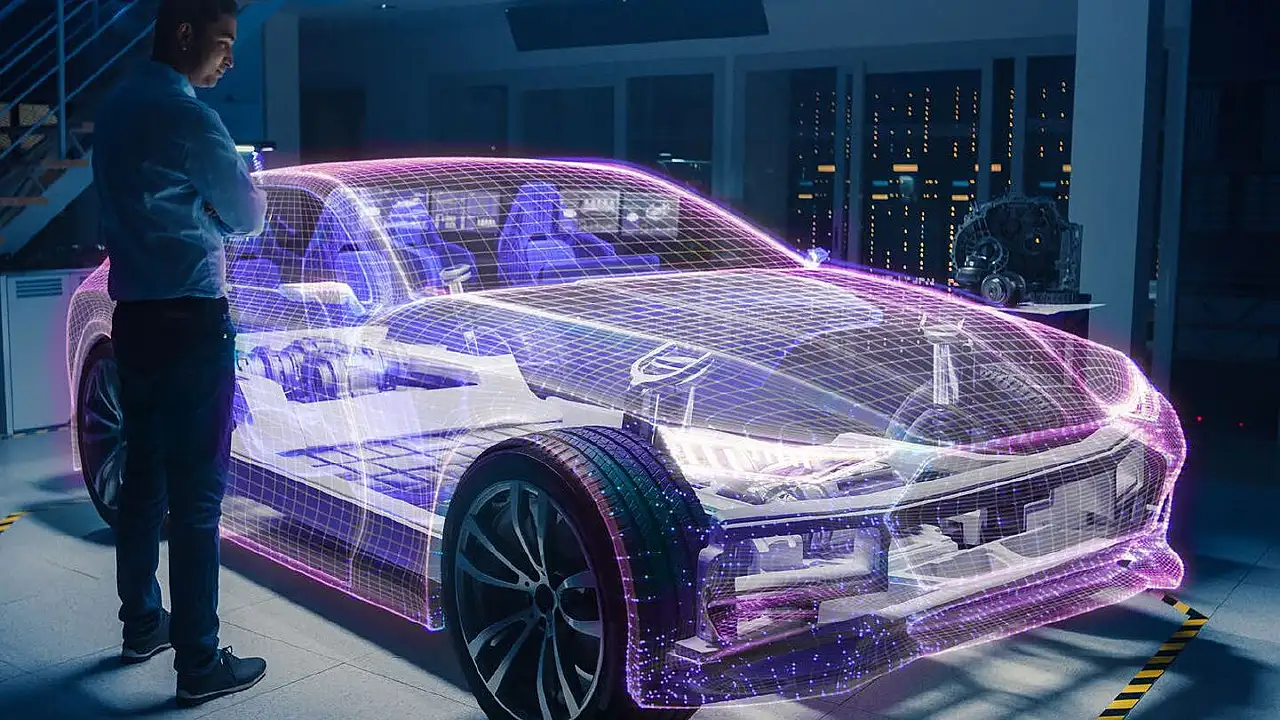
Ever since passenger cars were introduced, safety, performance, and reliability have been paramount to consumers. Traditionally, the auto industry met these demands through optimised machinery and hardware. However, today's consumers view vehicles, like smartphones, as ultimate connected devices. This shift steers the industry towards a new era of software-defined, service-driven digital mobility.
Accenture has played a significant role in transitioning the automotive industry from hardware-driven to software-driven technologies. Julie Sweet, Chair & CEO of the global company, explained: “All strategies lead to technology; therefore, companies must reinvent all parts of the enterprise with data, AI and new ways of working to build resilience and find paths to new growth.”
Dipti Vaishnav, MD and Lead of Industrial & Mobility at Accenture in India explains how the company supports its clients in harnessing the necessary capabilities to innovate and reinvent all parts of the enterprise with data and expand rapidly. According to her, progressive OEMs are tuning into the shifting demands of consumers, transitioning towards a new era of software-driven, service-oriented digital mobility. Vehicles are increasingly equipped with electronic control units (ECUs) that manage vast streams of data from sensors and actuators. This influx of data offers automotive companies invaluable insights into every aspect of vehicle operation, enabling the creation of monetisable features that foster deeper and more enduring customer relationships.

The company partners with leading auto manufacturers to leverage emerging technologies and elevate their product development and operational processes. Collaborating closely with OEMs across all layers of software-defined vehicles (SDVs), including the application layer, middleware, operating system (OS) layer, and hardware layer, it has established an SDV factory model. This model integrates embedded software engineers and architects to pioneer new technologies within the SDV domain, such as generative AI-led edge computing, digital loops, modern engineering, and ECU virtualisation, among others. By doing so, the company develops cutting-edge assets and offerings aligned with the latest trends, delivering scalable SDV solutions that seamlessly integrate vehicle, cloud, and customer interactions for an unparalleled experience.
In the automotive sector, the shift from conventional fuels such as petrol and diesel to alternative options like CNG, LNG, EVs, and Hydrogen is underway, presenting a myriad of challenges. According to Vaishnav, navigating this transition poses several hurdles for the industry, including infrastructure availability, consumer acceptance, technology standardisation, and regulatory policy alignment. Each alternative fuel is at a different stage of technological development, necessitating tailored infrastructure solutions and prompting concerns about preparedness and investment.
Integrating Comprehensive Software, Service Platforms
Integrating vehicles into comprehensive software and service platforms presents a host of challenges, including the seamless provision of connectivity and ensuring safety standards. While connected vehicle platforms offer advantages like real-time diagnostics and remote monitoring, they demand robust infrastructure and stringent cybersecurity protocols to safeguard data and maintain continuous connectivity. Furthermore, addressing consumer apprehensions such as range anxiety in EVs calls for precise range prediction algorithms and the expansion of infrastructure to accommodate fast-charging stations. Safety considerations, such as Advanced Driver Assistance Systems (ADAS), require sophisticated sensor technologies and seamless integration with existing vehicle systems to ensure consistent and reliable performance, she noted.
“We work with OEMs to enhance consumer mobility across key areas such as upgrading E/E architecture and its corresponding processes, methods, toolchains to increase speed to market, and offer comprehensive network security service capabilities to address critical safety and performance concerns. This collaboration results in OEMs delivering minimum viable product (MVP) for the future platform and being able to establish an overarching working model to address challenges in the long run,” Vaishnav noted.
Shift In Production Process
Shifting from mass production to mass customisation represents a pivotal change for automotive OEMs, encompassing multiple facets such as technology integration, supply chain optimisation, and customer interaction. According to her insights, the path to hyper-personalisation commences with robust customer engagement strategies. Accenture aids OEMs in crafting tailored customer experiences, exemplified by online configurators enabling customers to personalise their vehicles before purchase. Moreover, the company supports establishing feedback channels to capture customer preferences, which can be seamlessly integrated into future product designs.
Supply Chain Optimisation
The company specialises in streamlining supply chains through predictive analytics for demand forecasting, supplier management, and inventory optimisation. This ensures that OEMs have the necessary parts and custom components available precisely when required, thereby reducing lead times and enhancing overall efficiency across production and distribution networks to accommodate personalised demands.
Regarding technology integration, Accenture supports identifying and incorporating cutting-edge technologies like AI, machine learning, and IoT into production workflows. These technologies streamline customisation efforts by optimising production lines, enhancing inventory management, and enabling seamless real-time communication among various stages of the production process to fulfil mass customisation requirements efficiently.
Data Analysis
“We can analyse customer data and market trends to provide insights into evolving customer preferences across different vehicle segments. This data-driven approach helps OEMs understand which customisation options are most in demand and allows them to tailor their offerings accordingly,” she mentioned.
Vaishnav emphasises that software integration is paramount in the realm of SDVs. It enables hyper-personalisation by seamlessly coordinating various software-driven features and services. This integration empowers OEMs to fulfil their commitments to personalisation, enhanced safety, efficiency, and convenience. The company aids OEMs in streamlining the software development process by leveraging its system engineering expertise and orchestrating software through advanced test factories and automation solutions.

Areas Of Impact
Customised settings and profiles: Integrated software empowers SDVs to create customised user profiles encompassing seat positions, climate control preferences, infotainment settings, favourite destinations, and preferred driving modes. By automatically adjusting these parameters based on detected user profiles, SDVs can tailor the driving experience to individual preferences without requiring manual input.
Adaptive Assistance, AI-driven Recommendations: Integrated software systems provide personalised assistance and recommendations to drivers. For instance, the vehicle's navigation system can suggest route options based on the driver's past routes, prevailing traffic conditions, and time of day. Similarly, AI algorithms in the infotainment system can recommend music, podcasts, or other content based on the user's listening history and preferences.
Context-aware Features: Integrated software enables SDVs to be context-aware, allowing them to adapt their behaviour and functionality based on the current context, including the driver's location, driving conditions, weather, and traffic conditions. For example, the vehicle's adaptive cruise control system can adjust its speed and following distance based on surrounding traffic and road conditions.
Continuous Learning, Improvement: Integrated software systems continually learn and enhance their capabilities by gathering user feedback, refining recommendations, and adapting functionality to serve users better.
Automotive Technology Stacks
Enterprise technology firms are instrumental in constructing comprehensive automotive technology ecosystems, furnishing the foundational infrastructure, software platforms, and solutions essential for creating, integrating, and functionalising diverse automotive technologies. These companies contribute critical components across several key areas, including infrastructure development, software platforms, data management and analytics, security and compliance, integration services, and collaborative ecosystems.
“We support auto companies in bringing together a multitude of services in the SDV space. We manage cloud platforms that provide a centralised location to manage and deploy enterprise resources like applications, data, and services. We bring application programming interface (API) management tools, enable standardisation of APIs across the enterprise, ensuring consistency and promoting reusability. We support in over-the-air (OTA) or firmware over-the-air (FOTA) remote updates of software and firmware on devices connected to the cloud, eliminating the need for physical intervention, and streamlining the process of updating devices across a large, distributed network. At the same time, we help bring in tools and solutions for better threat detection and prevention capabilities to identify and mitigate security risks,” Vaishnav added.
Also Read:
Accenture To Drive Hero MotoCorp's Supply Chain Transformation
Hyundai Mobis Partners With Wind River To Propel SDV Development